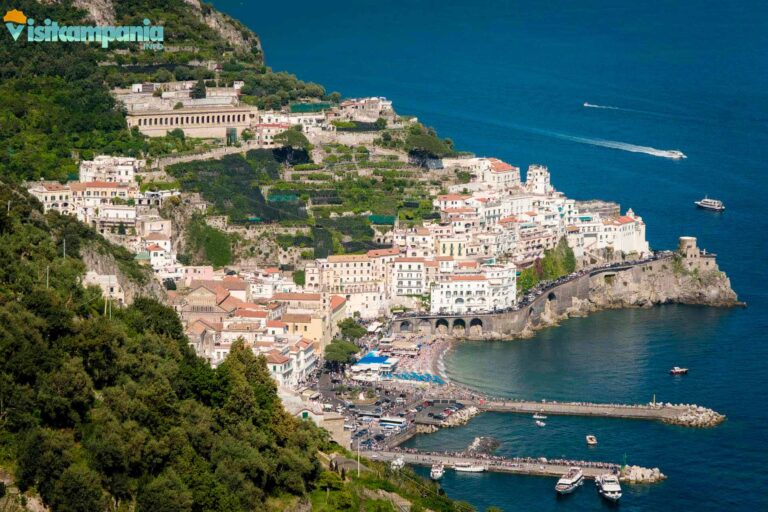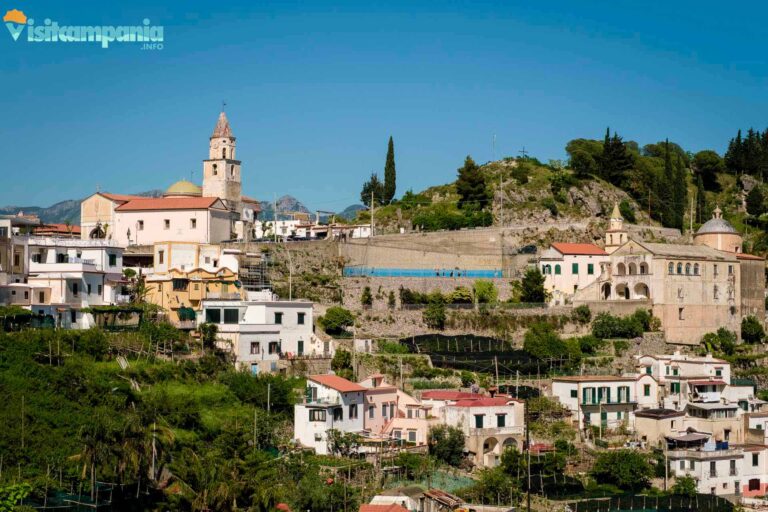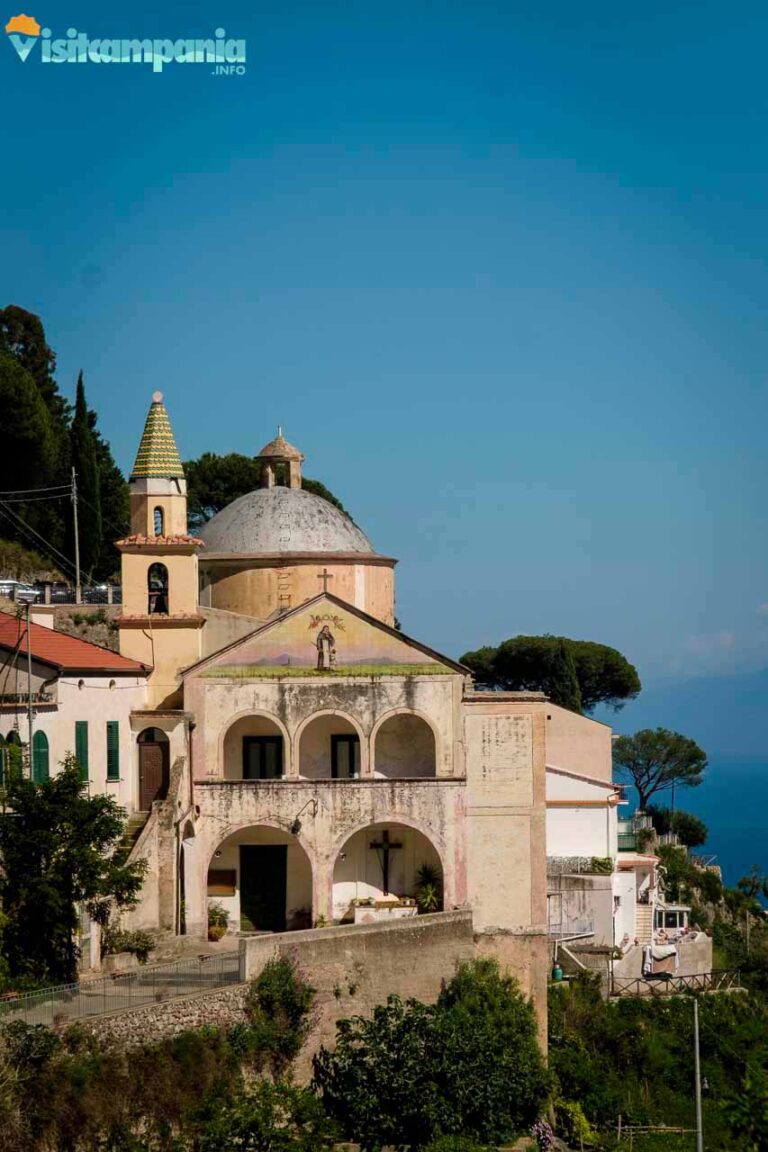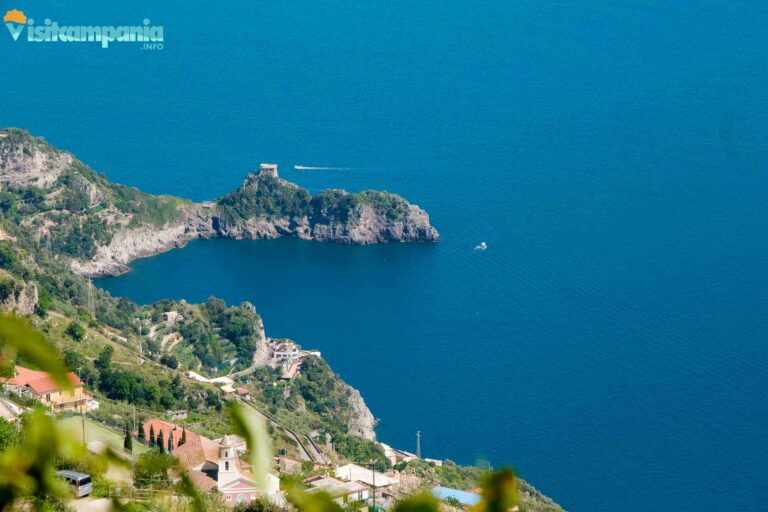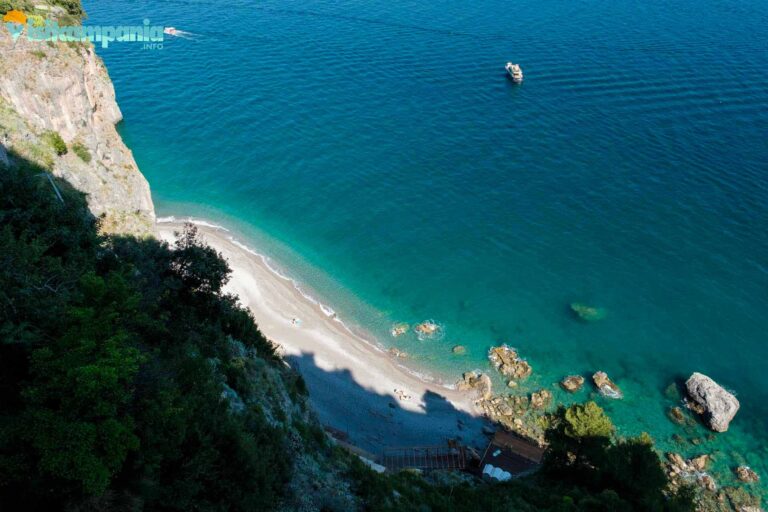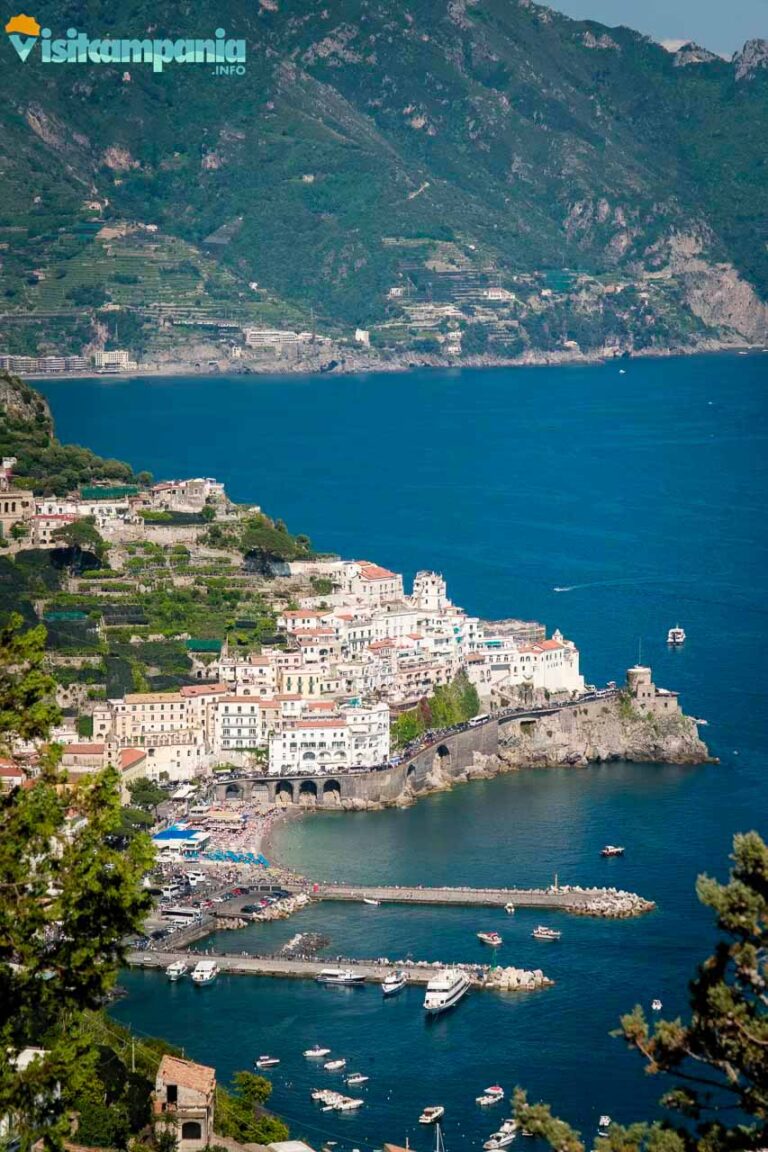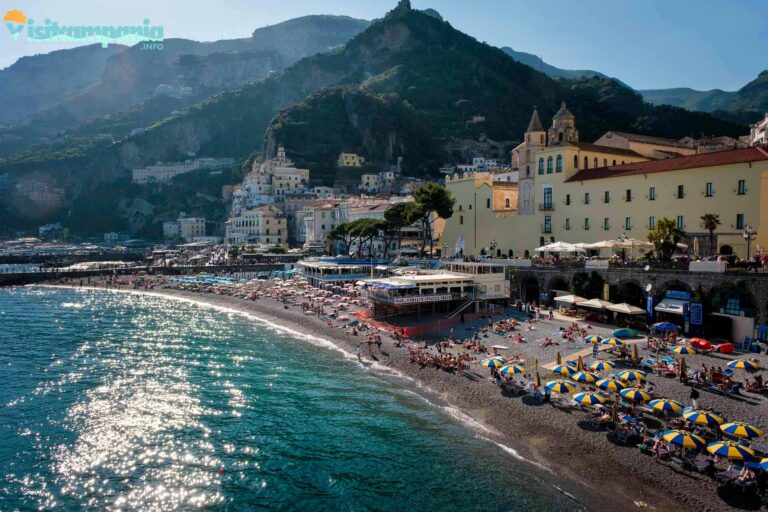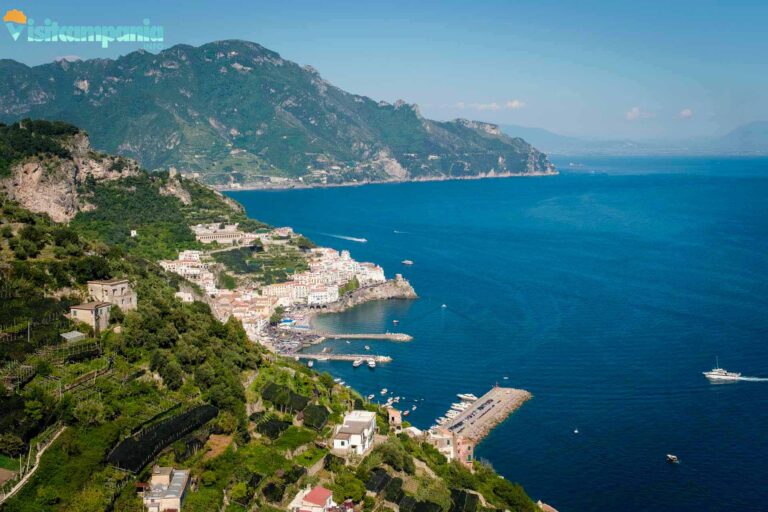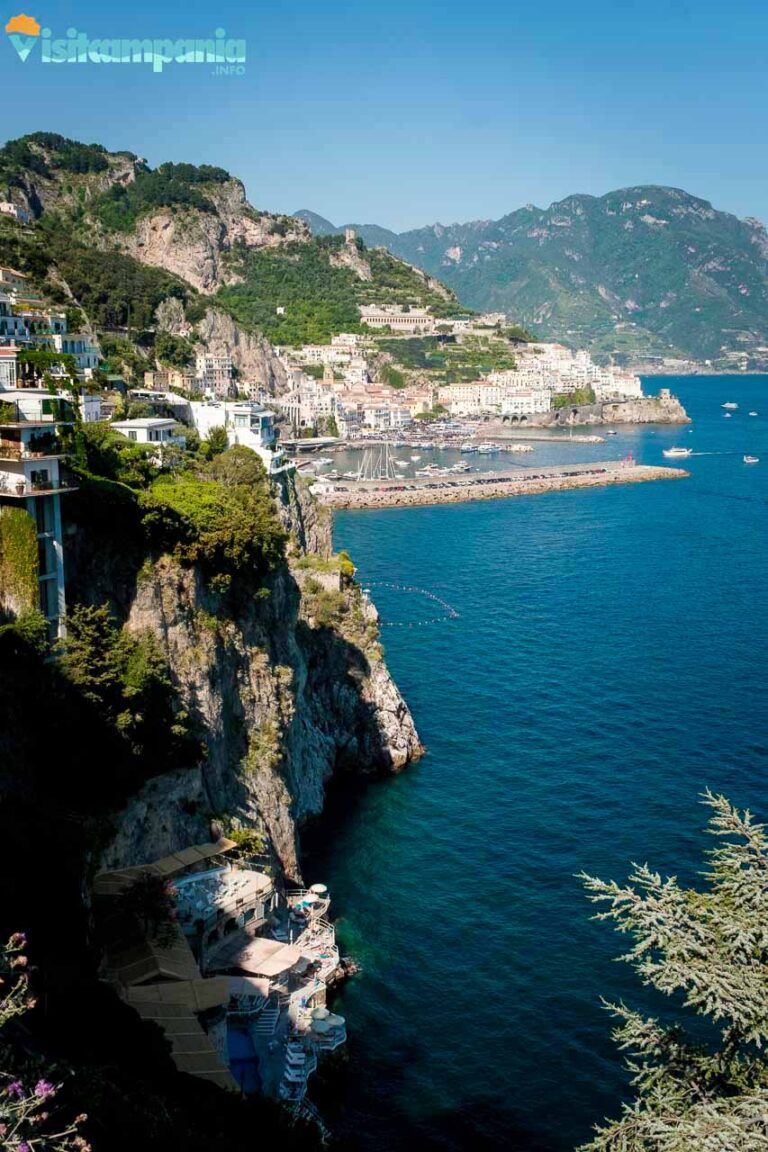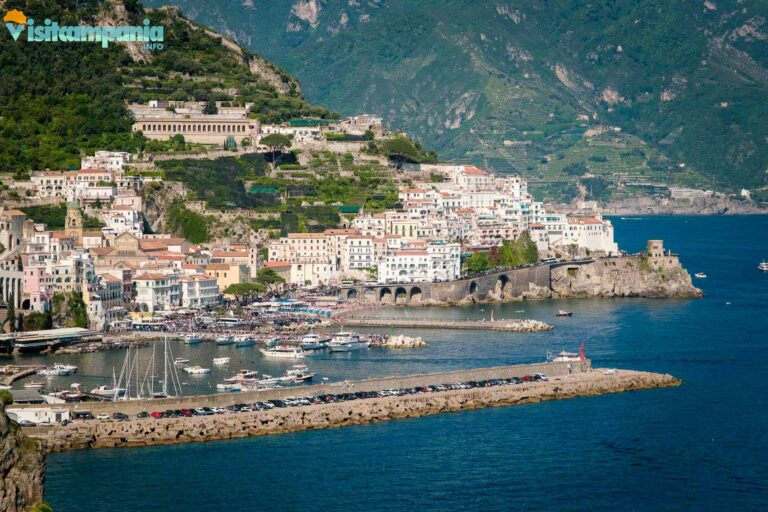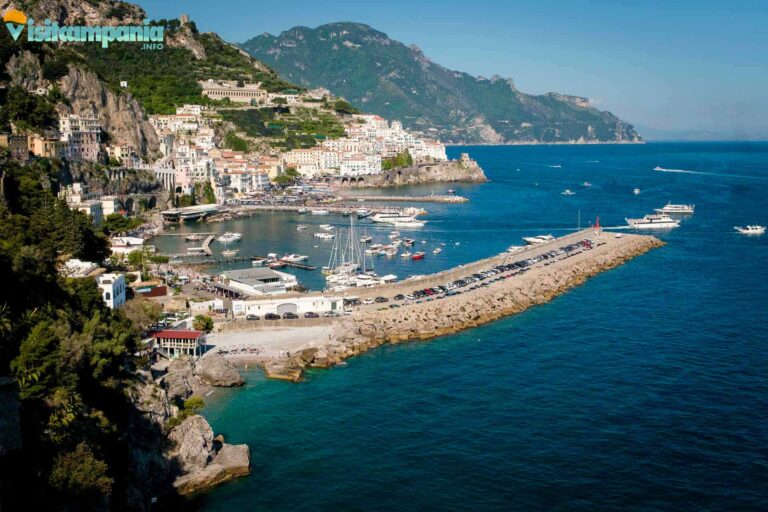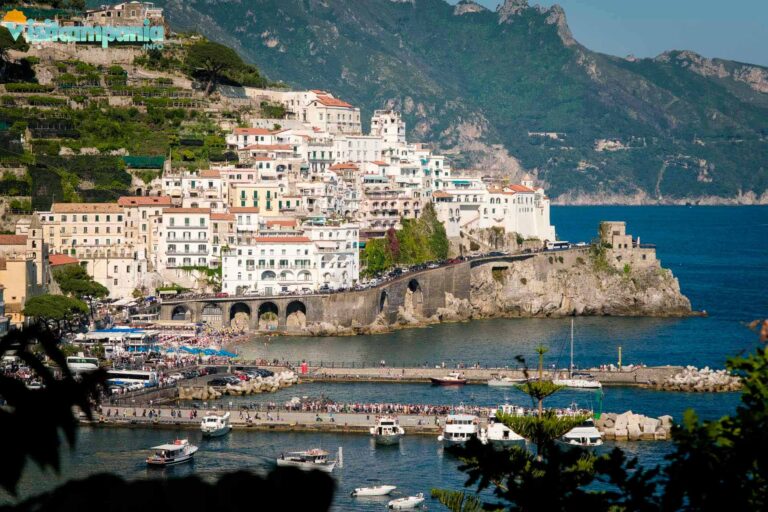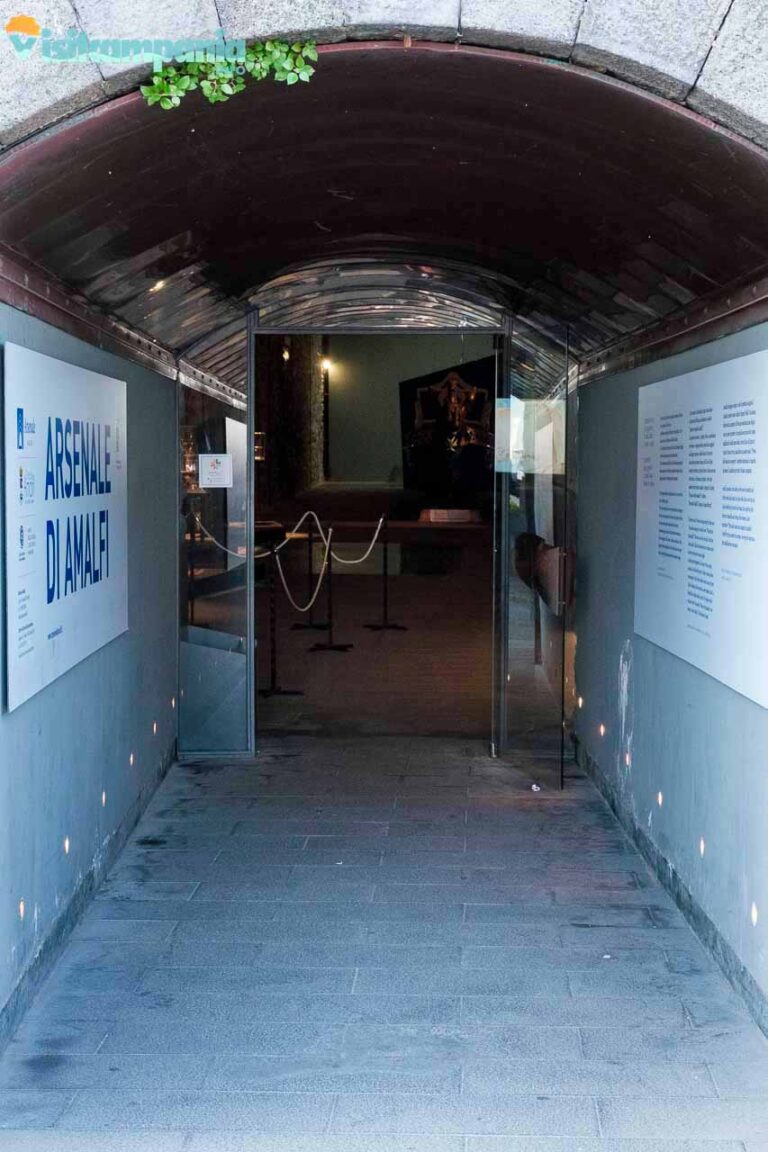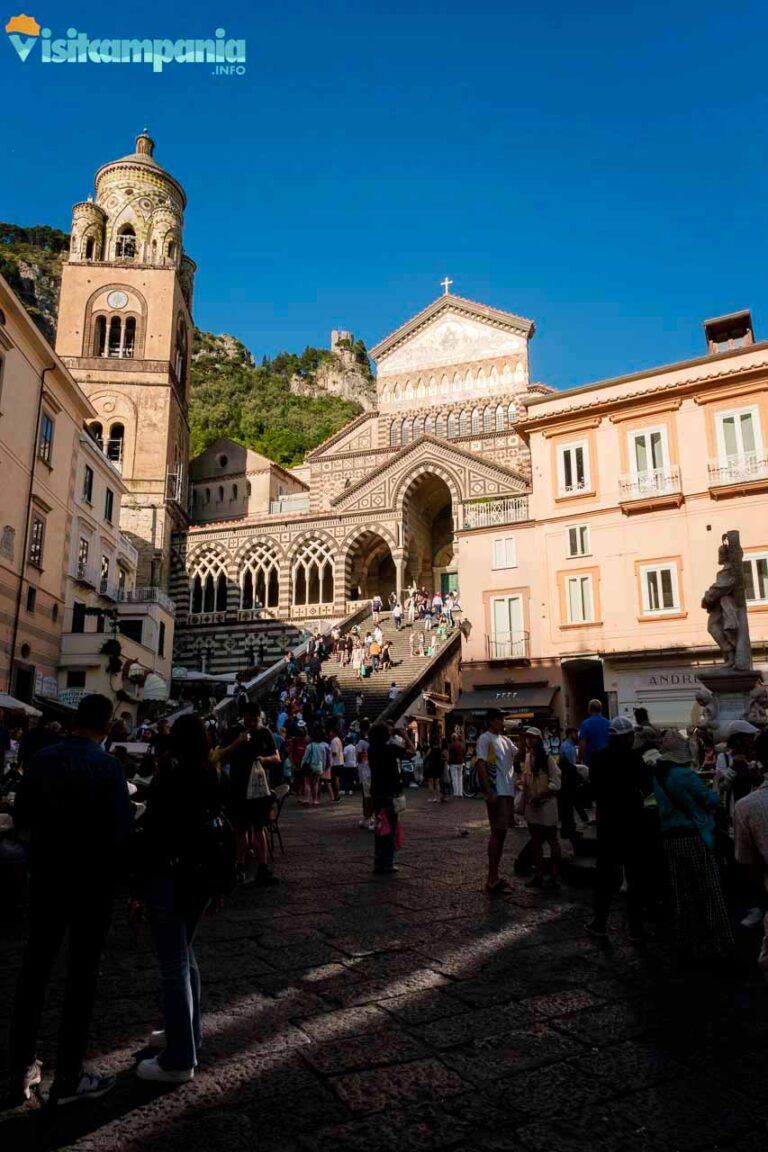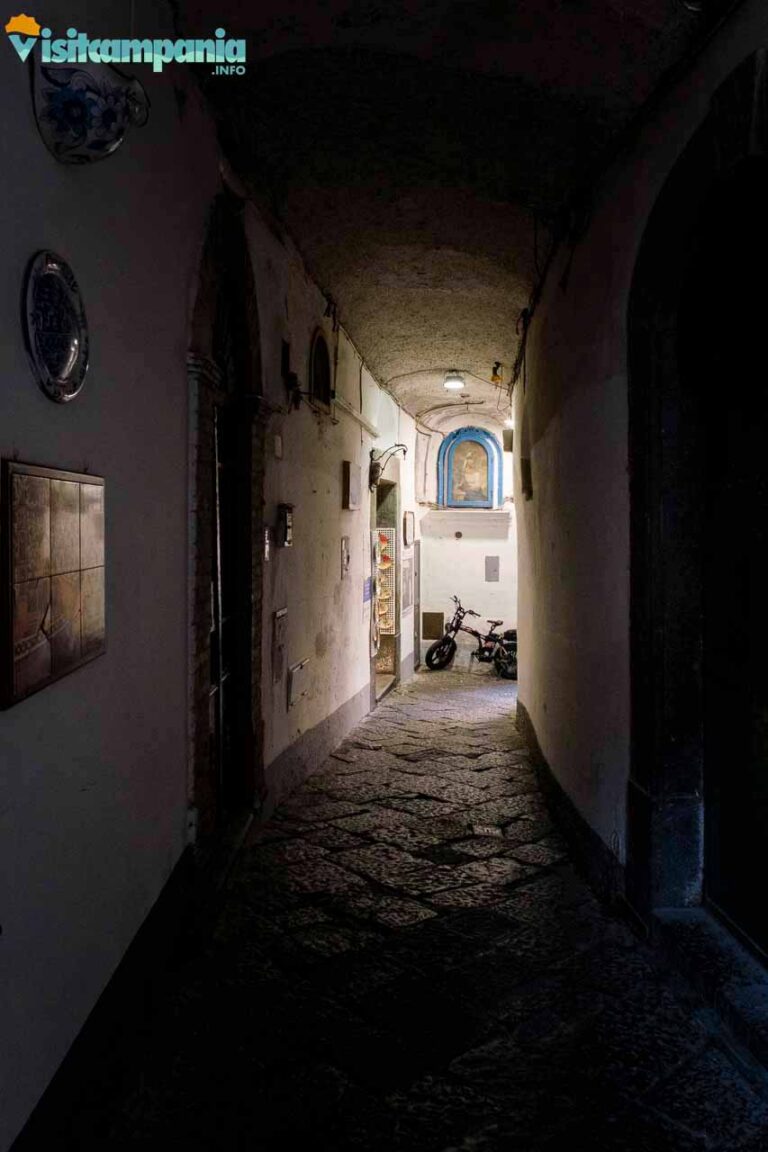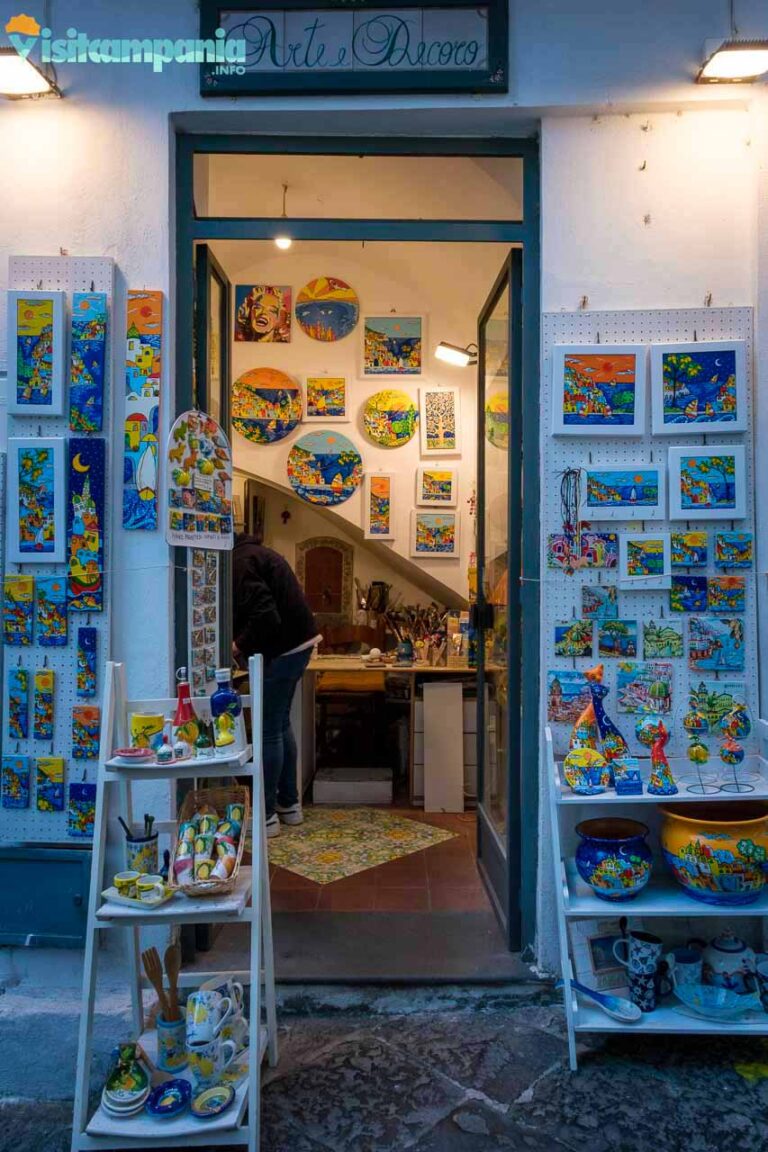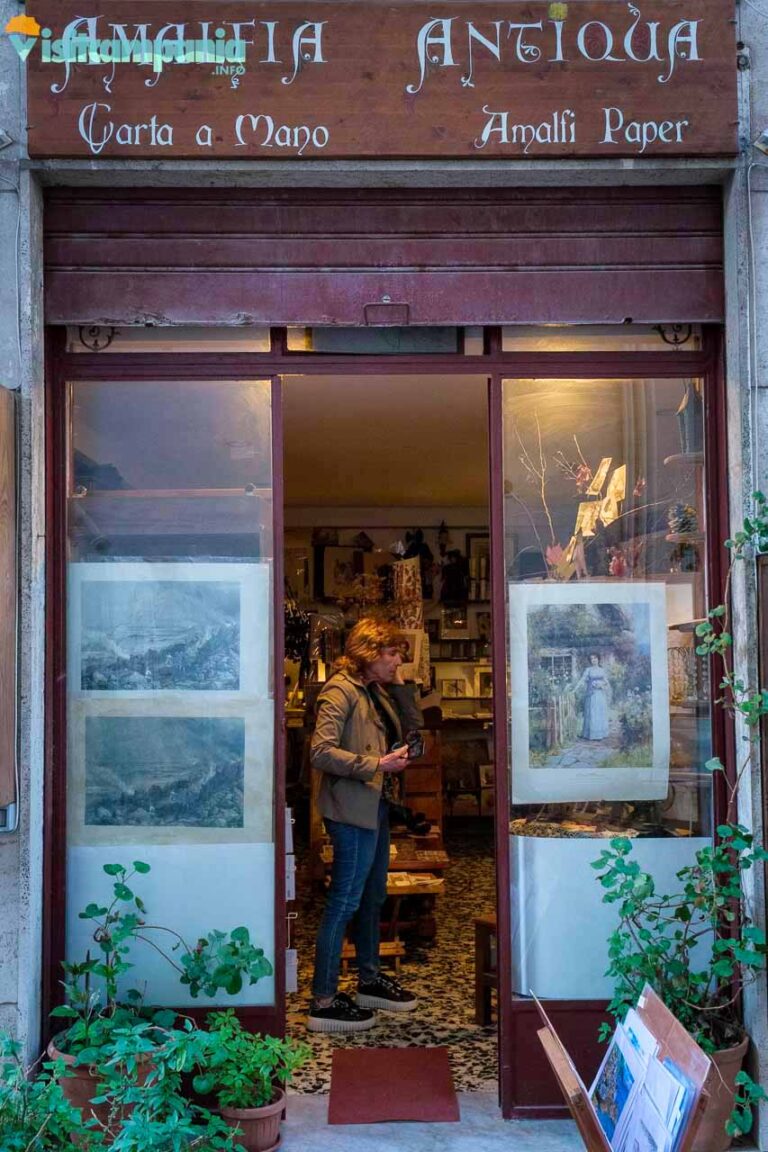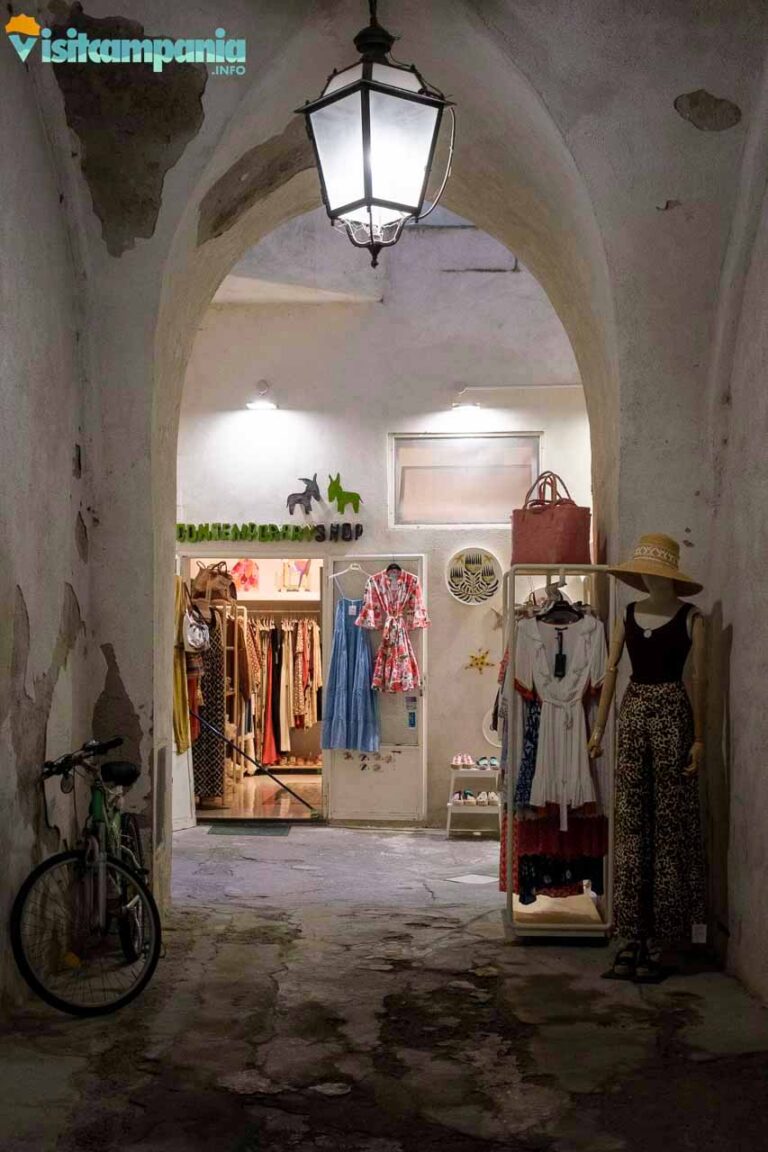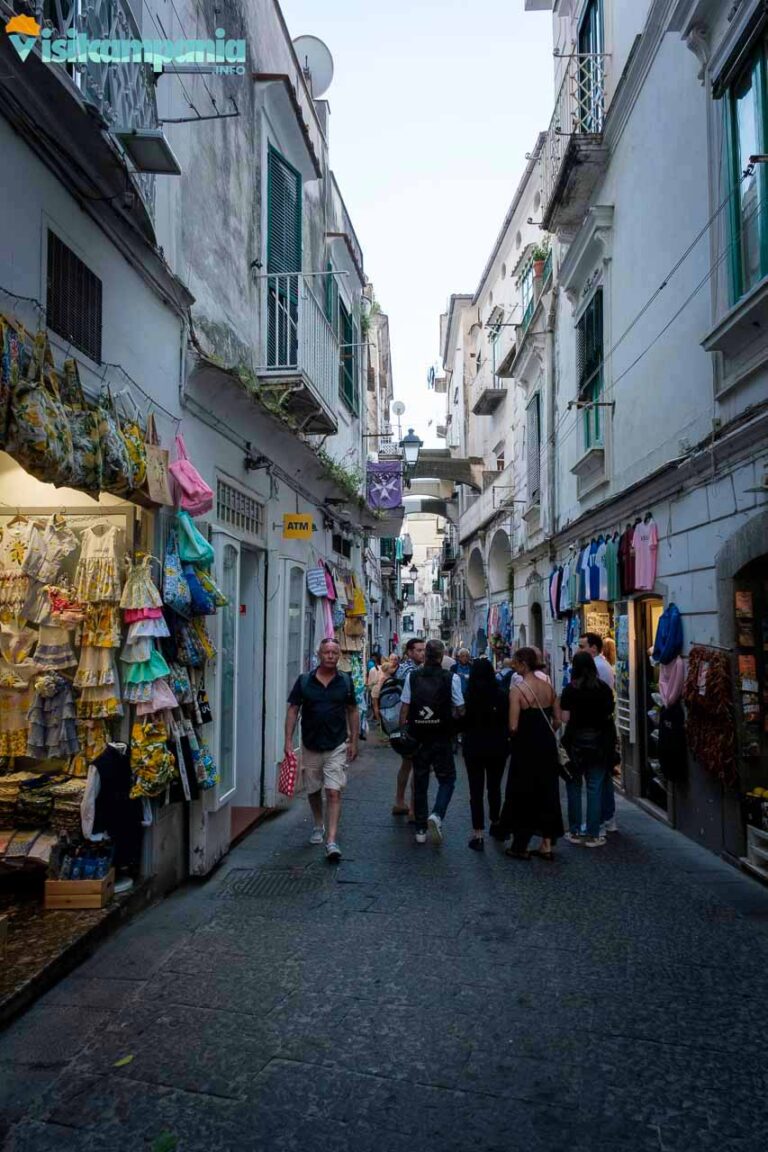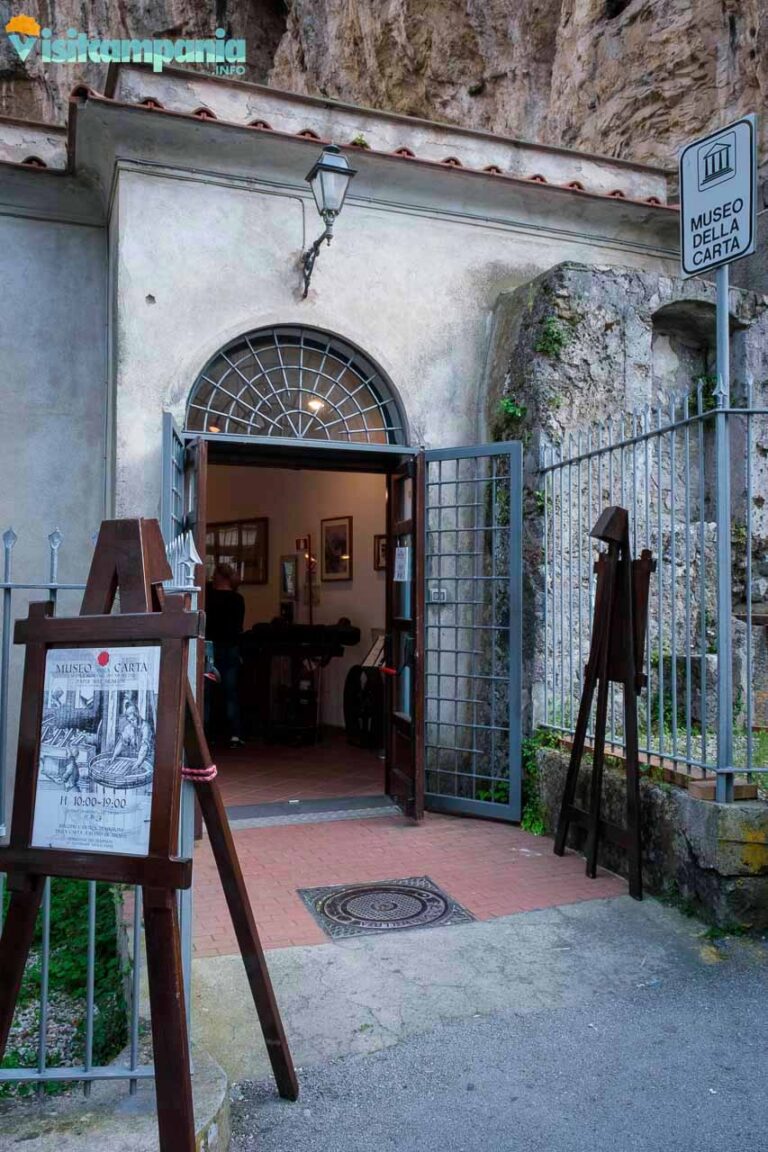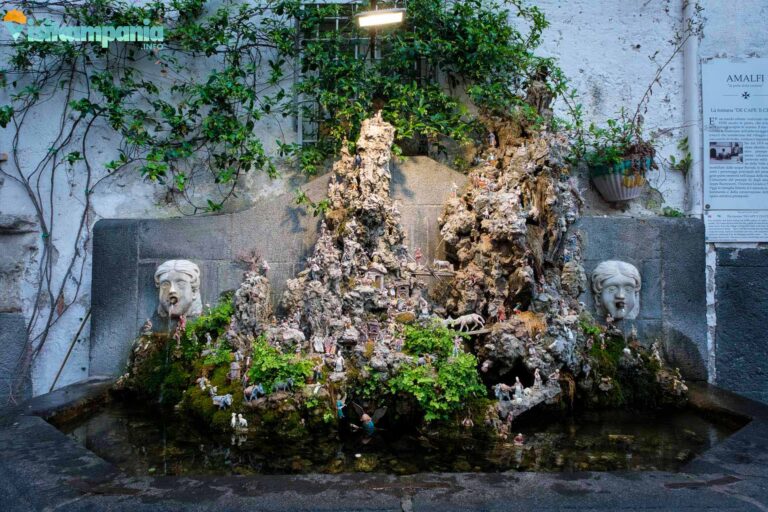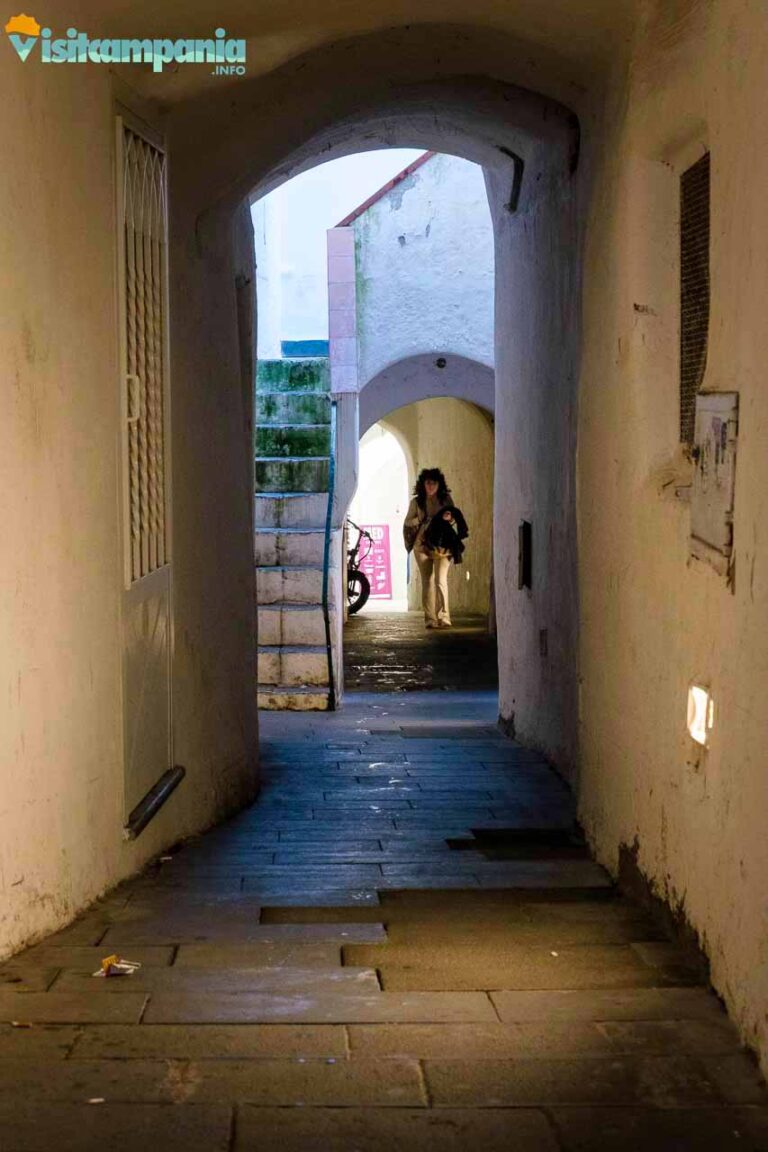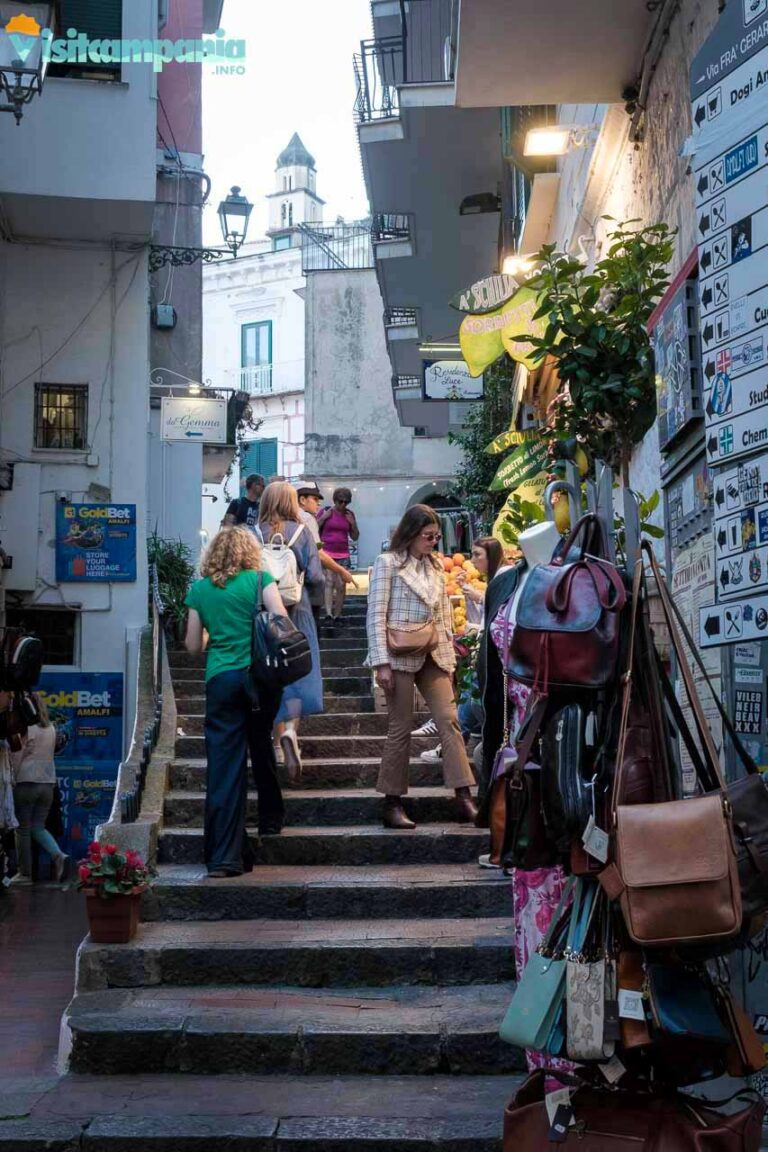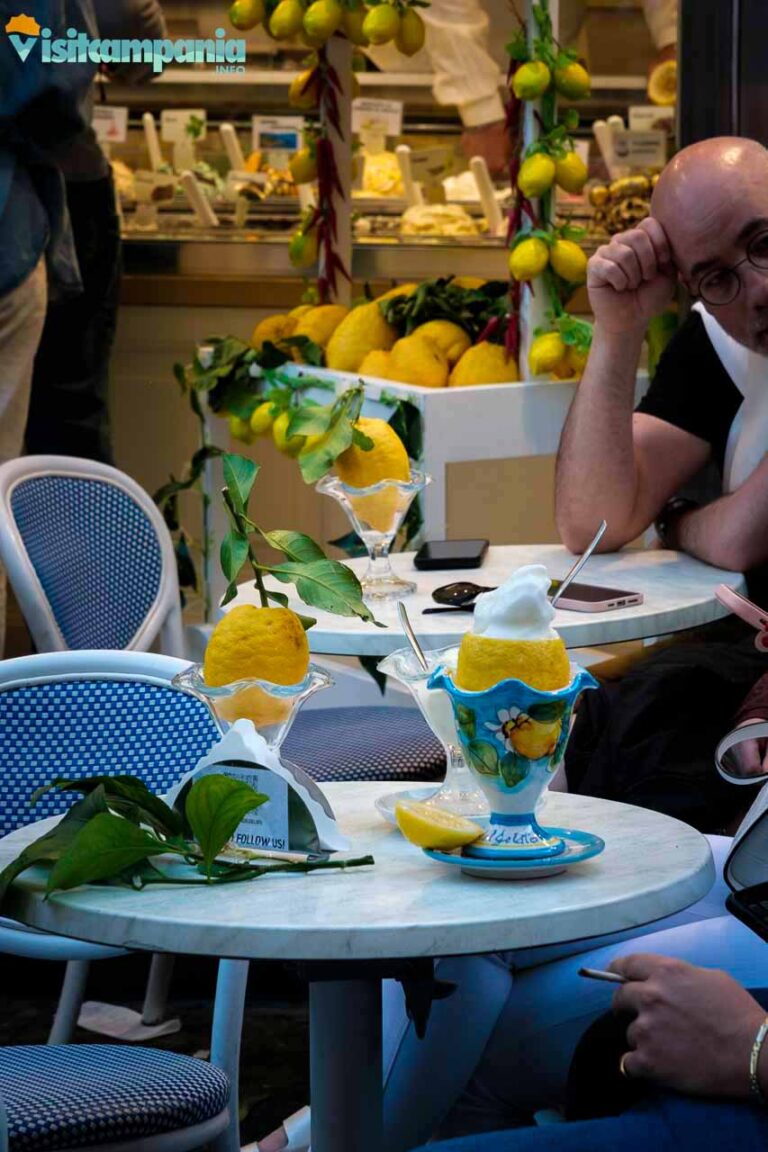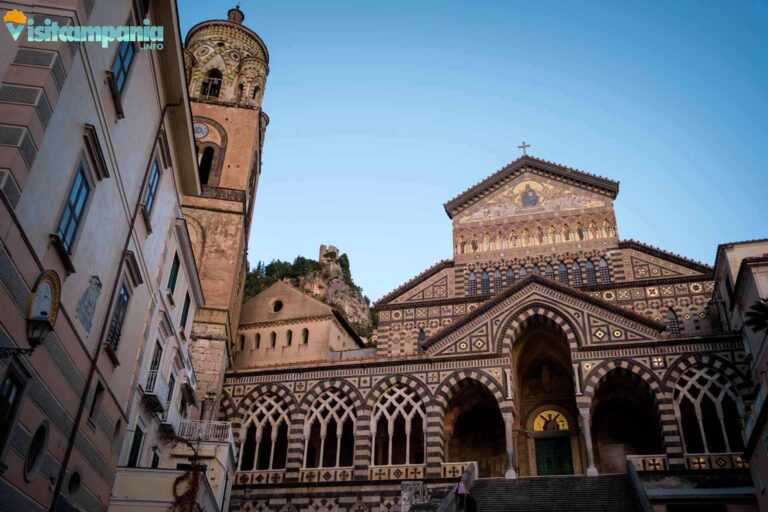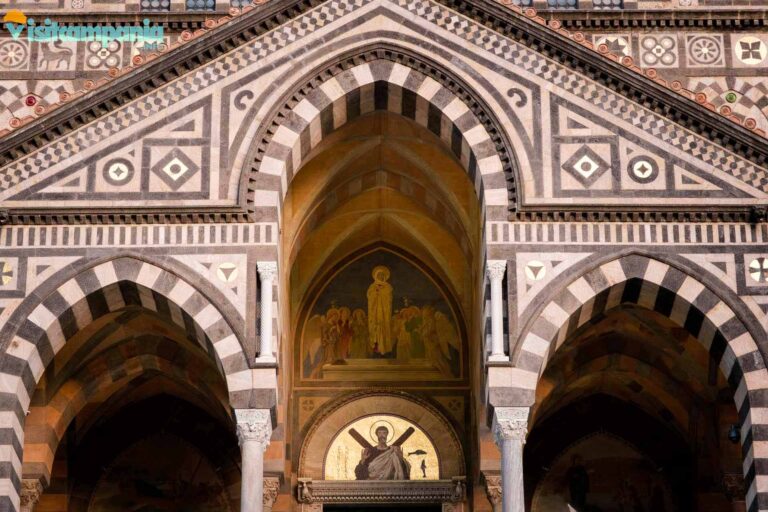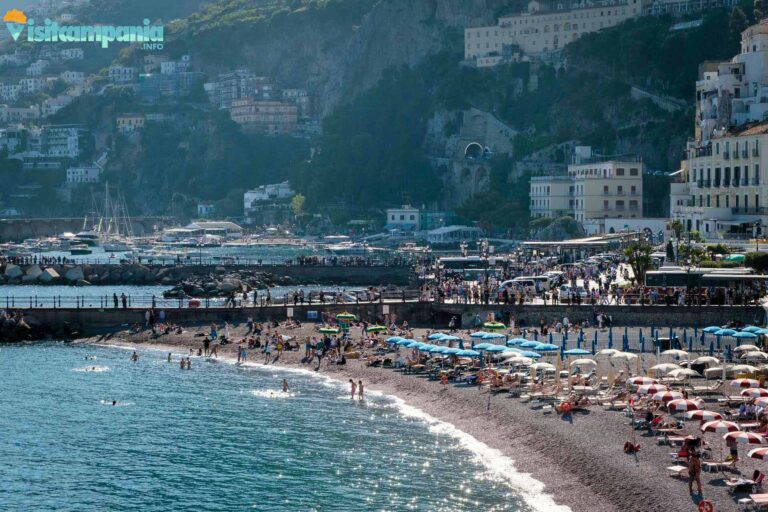What is Amalfi
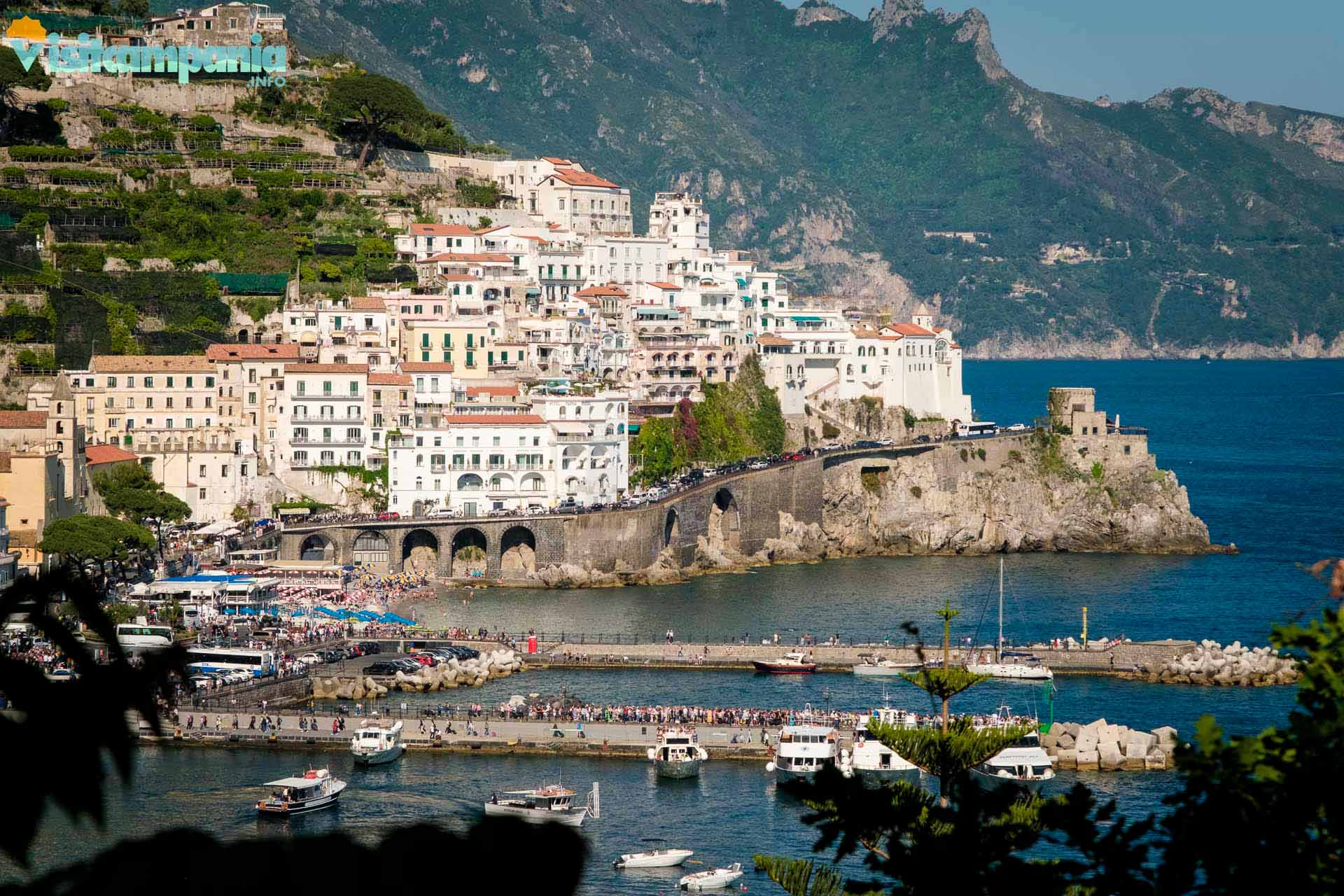
Amalfi is a jewel of the Amalfi Coast , in the province of Salerno , with just over 4,600 inhabitants . Once a powerful Maritime Republic , on a par with Genoa, Pisa and Venice, today it is a fascinating tourist destination of international fame .
Situated in a spectacular position between the sea and the mountains , Amalfi is the cultural and geographical heart of the coast , a UNESCO World Heritage Site since 1997. Walking through its narrow streets, between glimpses of the sea and ancient architecture, is an unforgettable experience.
Brief historical notes
Amalfi was founded in the 4th century AD , probably by Roman colonists. Protected by the Lattari Mountains and overlooking the Tyrrhenian Sea, it was immediately a strategic port. In 596 it became a bishop’s seat. In 839 it became autonomous from the Duchy of Naples, marking the beginning of its rise as a naval power .
Between the 9th and 11th centuries it was one of the great Italian Maritime Republics, together with Genoa, Pisa and Venice . Amalfi was the first to shine. Its merchants sailed the Mediterranean, establishing ports as far as Constantinople, Syria and North Africa. They brought spices, silk, precious metals. Famous for its robust fleet, Amalfi introduced the use of the compass and codified the Amalfi Tables , a maritime code adopted throughout the Mediterranean.
Its splendor reached its peak in the 11th century. Then came the Normans . In 1073 it was conquered, and between 1135 and 1137 it suffered the sackings of Pisa. Finally, in 1343, a tsunami destroyed much of the city . From that moment on, Amalfi never returned to being a naval power.
Today it remains one of the jewels of the Coast . Between the Cathedral, the alleys and the sea, Amalfi still tells its maritime and cosmopolitan soul.
What to see in Amalfi
Beaches
Great Marina
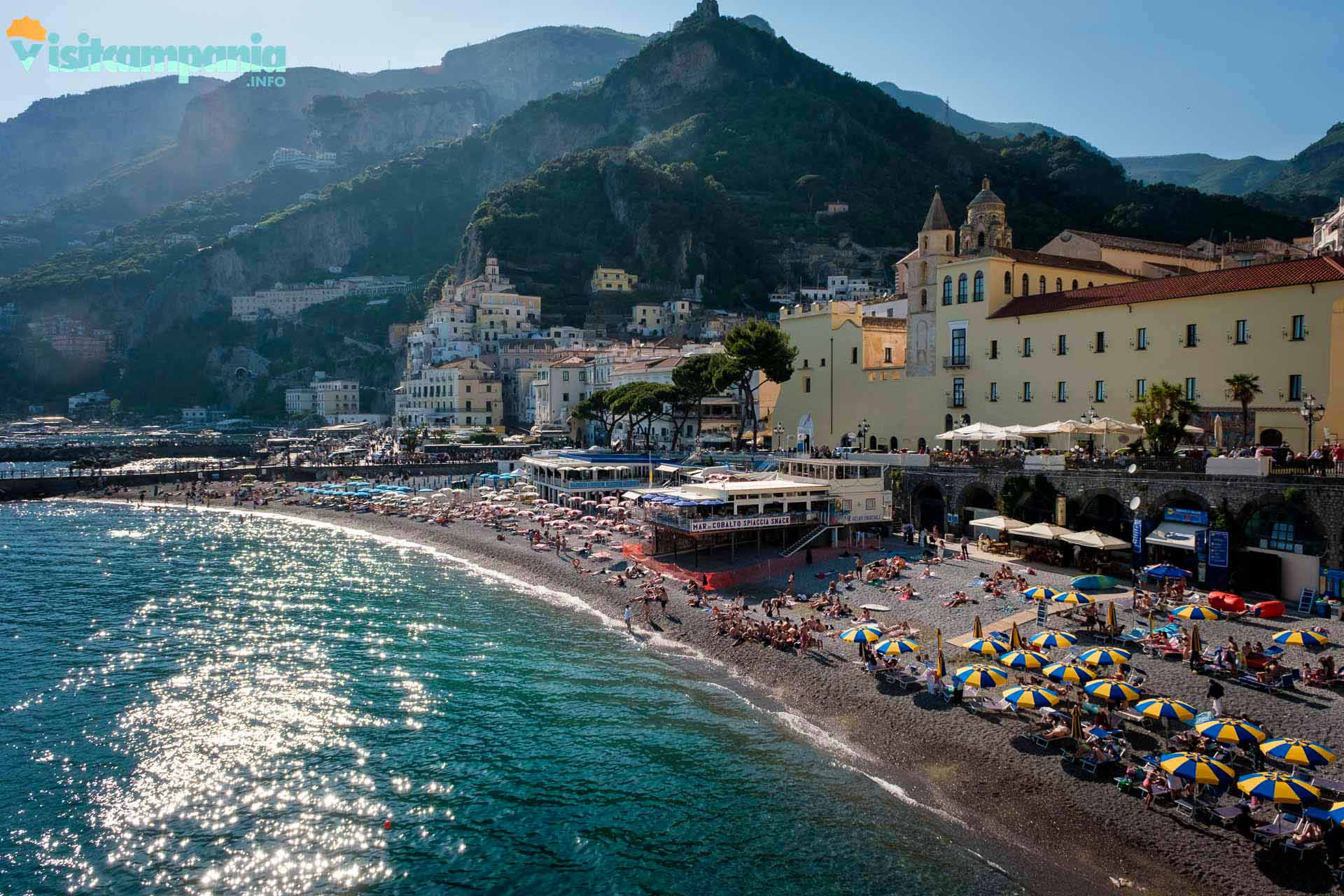
Located in the heart of Amalfi , Marina Grande is the main and most popular beach in the city . Easily accessible, it offers beach resorts equipped with sun loungers, umbrellas, restaurants and bars. Ideal for families and for those who want convenience and services at their fingertips.
Duoglio Beach
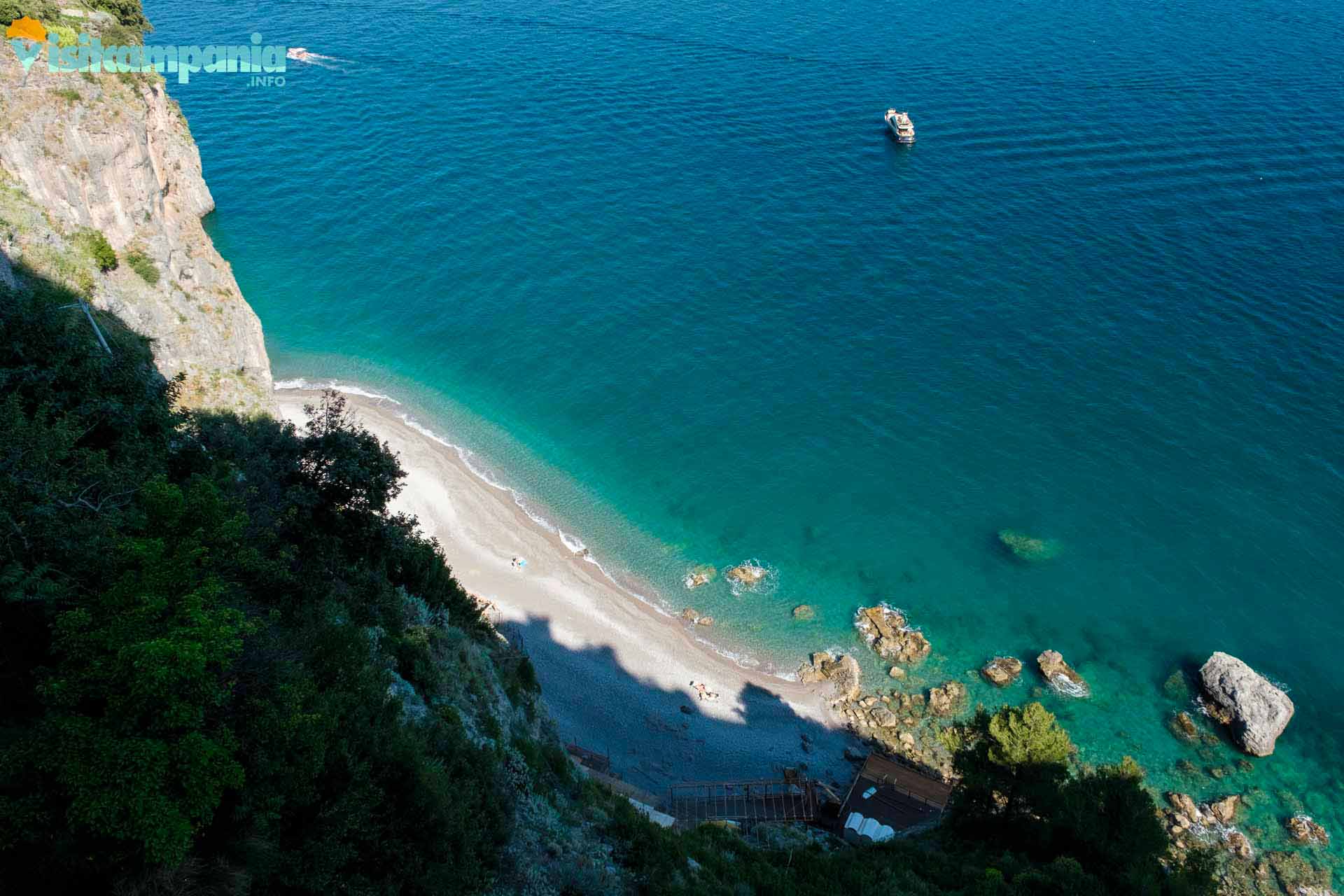
About a kilometer from the center of Amalfi, this beach is a true hidden gem. It can be reached by going down about 400 steps or by sea with boats that leave from the port. Its clear waters and tranquility make it perfect for those seeking relaxation away from the crowds .
Holy Cross
Accessible only by sea , this small cove offers an exclusive experience. Two beach restaurants offer boat shuttle service from Amalfi. The turquoise waters and views of the surrounding cliffs create a dreamlike atmosphere.
Sirens’ Beach
Less crowded than Marina Grande, this beach is ideal for those looking for a little more tranquility without straying too far from the center . It offers basic services and a more intimate atmosphere.
O’ Rarone
A small beach accessible only by sea , ideal for couples seeking privacy. It is famous for the ” lovers’ arch “, a natural rock arch that adds a romantic touch to the landscape.
La Vite Beach
Dominated by the Torre di Capo della Vite , a 16th-century anti-pirate tower, this beach offers deep, clean waters that are perfect for expert swimmers. The light breeze makes it pleasant even on the hottest days.
Atrani Beach
In the picturesque village of Atrani, a few steps from Amalfi , this sandy beach is perfect for families with children . The village itself is worth a visit for its characteristic streets and authentic atmosphere.
Castiglione Beach
Located in the Ravello district , this beach is surrounded by high cliffs that protect it from the winds. It can be reached by going down a staircase of 186 steps , but the effort is repaid by the beauty of the place.
Historic center and seafront
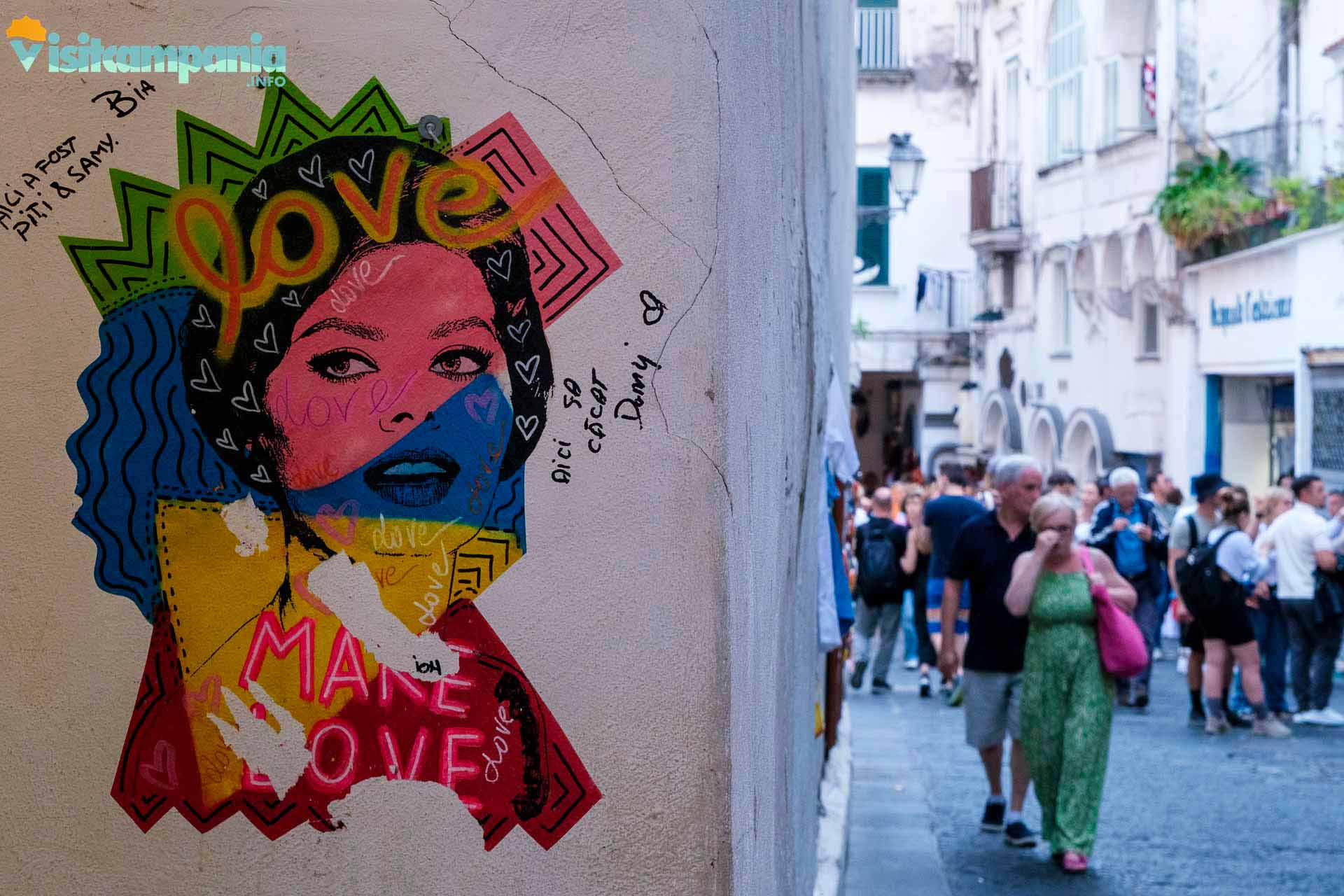
The ideal tour begins in Piazza Duomo , dominated by the splendid Cathedral of Sant’Andrea . It then continues along Via Lorenzo d’Amalfi and immerses itself in a lively network of shops, pastry shops and ceramics shops. From the centre, finally, in a few minutes you reach the seafront where the Marina Grande beach and the tourist port are located, the starting point for boat trips. Along the way, restaurants and cafes offer a break with a view of the sea.
The Amalfi Cathedral
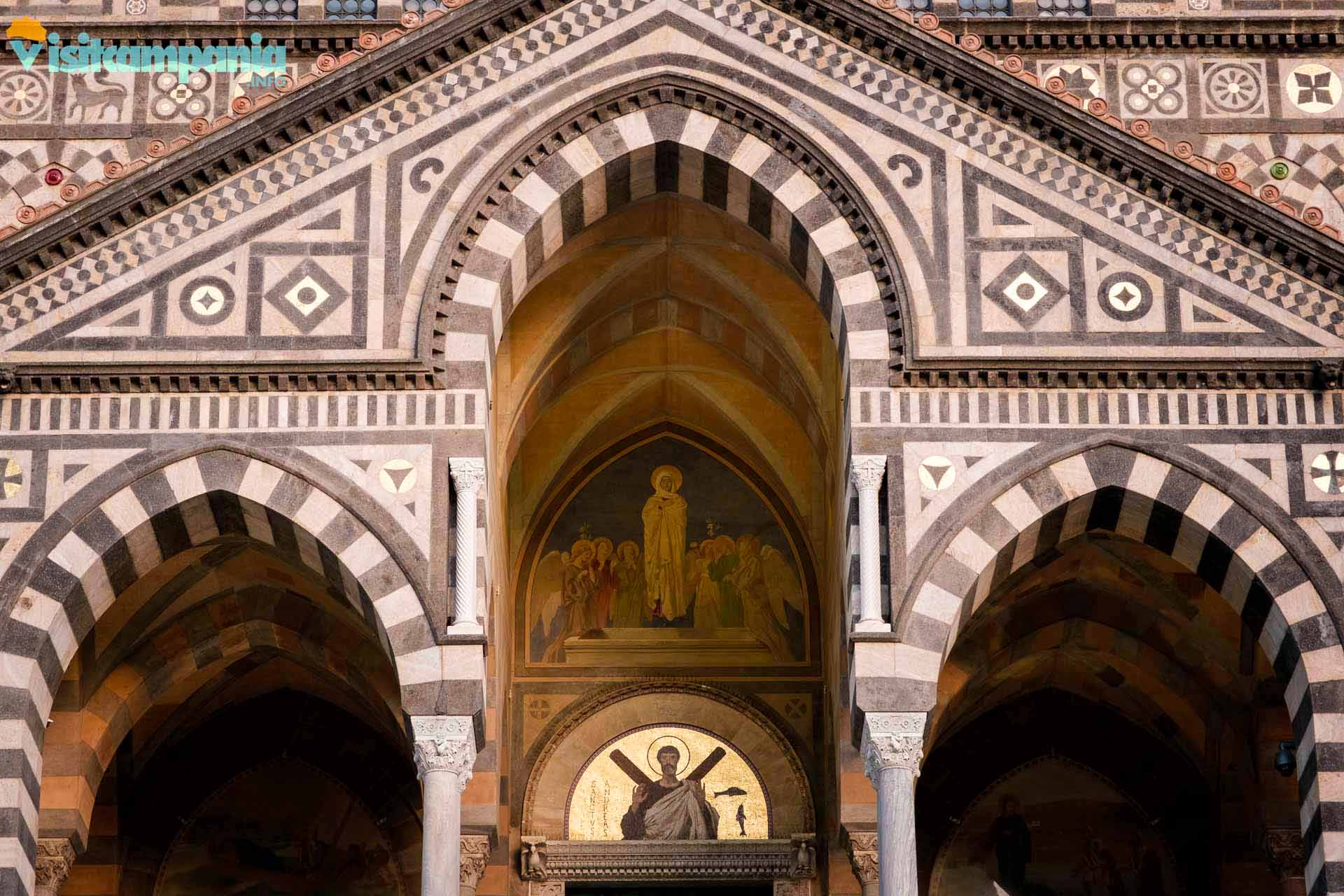
In the center of Amalfi , the Cathedral of Sant’Andrea elegantly overlooks Piazza Duomo. It is the spiritual symbol of the city.
It was built in 987 by Duke Mansone I, next to the older Basilica of the Crucifix. Over the centuries, the complex has changed face several times . Today it is a mosaic of styles : Romanesque, Baroque, Rococo, Arab-Norman. It reflects the maritime and cosmopolitan soul of the Amalfi Republic .
The current 19th-century façade , dominated by a staircase of 62 steps , is striking for its colorful mosaics, elegant atrium and tall portal. Next to it, the Romanesque bell tower reveals Moorish arches and brilliant majolica. Not far away, the Cloister of Paradise is a silent oasis. Intertwined arches and slender columns create a magical, oriental atmosphere. Finally, the crypt houses the relics of Saint Andrew , the patron saint of Amalfi. They were brought from Constantinople in 1208. Today they rest under a marble altar. The bronze statue of the saint watches over the city, a destination for thousands of visitors every year.
Useful Information
Visiting hours:
- March – June: 9:00 – 18:45
- July – September: 9:00 – 19:45
- November – February: 10:00 – 13:00 and 14:30 – 16:30
Entrance ticket:
- €3.00 (reduced €1.00 for minors and over 65s)
Diocesan Museum and Cloister of Paradise
Next to the Cathedral , on the left side of the atrium, you can access the path that includes the Diocesan Museum and the Cloister of Paradise . The museum, housed in the Basilica del Crocifisso, exhibits frescoes, sacred works and liturgical objects that tell the story of the Amalfi faith. But the real wonder is the Cloister of Paradise , built between 1266 and 1268 by Archbishop Filippo Augustariccio. It was originally a noble cemetery . Its use as a cemetery ended in the sixteenth century, then the place was abandoned and finally restored in the twentieth century.
The Cloister is an Arab-Norman masterpiece . The square plan is surrounded by porticoes with crossed vaults and 120 twin columns with Moorish arches. In the center, a garden with palm trees makes the environment mystical and harmonious. Along the sides are six chapels, ancient witnesses of faith. Roman and medieval sarcophagi of great historical value are preserved between the arches.
Useful information
- Visiting hours : March to June, 9:00 – 18:45; July to September, 9:00 – 19:45; November to February, 10:00 – 13:00 and 14:30 – 16:30.
- Entrance fee : €3.00 (reduced €1.00 for minors and over 65s).
Ancient Arsenals of the Republic
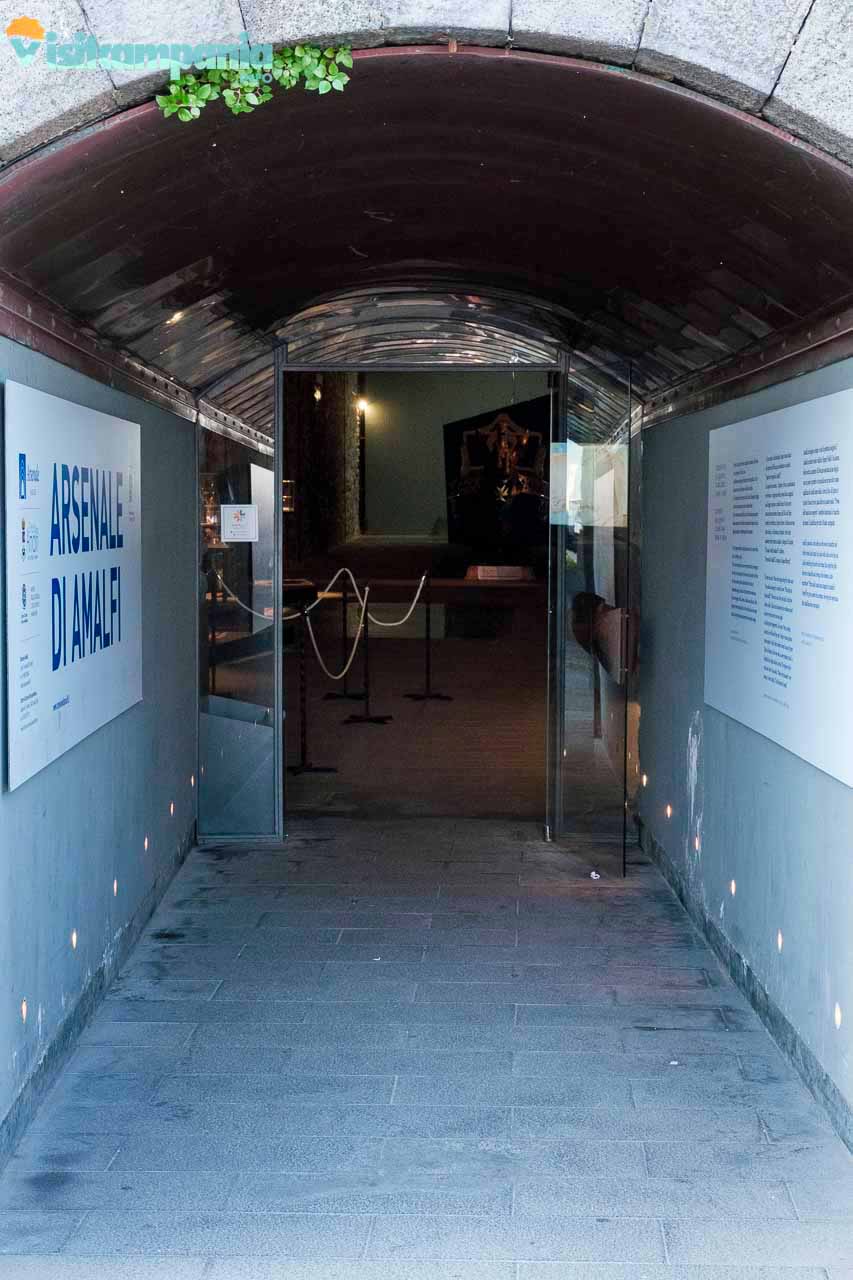
Built around 1059, they were the shipyards where the galleys that sailed the Mediterranean were born . Here the naval power of Amalfi was built. At one time they reached the sea to allow direct launching. Today there remain two naves with high cross vaults and ten stone pillars.
Inside is the Museum of the Compass and the Maritime Duchy . It is a journey into the nautical ingenuity of the Amalfi people. Among the treasures on display is the Tabula de Amalpha , an ancient maritime code from the 11th century, used in Mediterranean ports for centuries. The museum houses compasses, on-board instruments, and medieval coins such as the tarì, a symbol of the city’s wealth. The visit is completed by naval models, including the galleon of the Regatta of the Ancient Maritime Republics .
Today the Arsenale is also home to temporary exhibitions and cultural events , an ideal bridge between the city’s past and present.
Useful Information
- Address : Largo Cesario Console 3, 84011 Amalfi (SA)
- Website
- Opening hours : every day from 10:00 to 20:00
- Entrance fee : €3.00 (reduced €1.50 for groups, university students and guests of local accommodation facilities).
Paper Museum
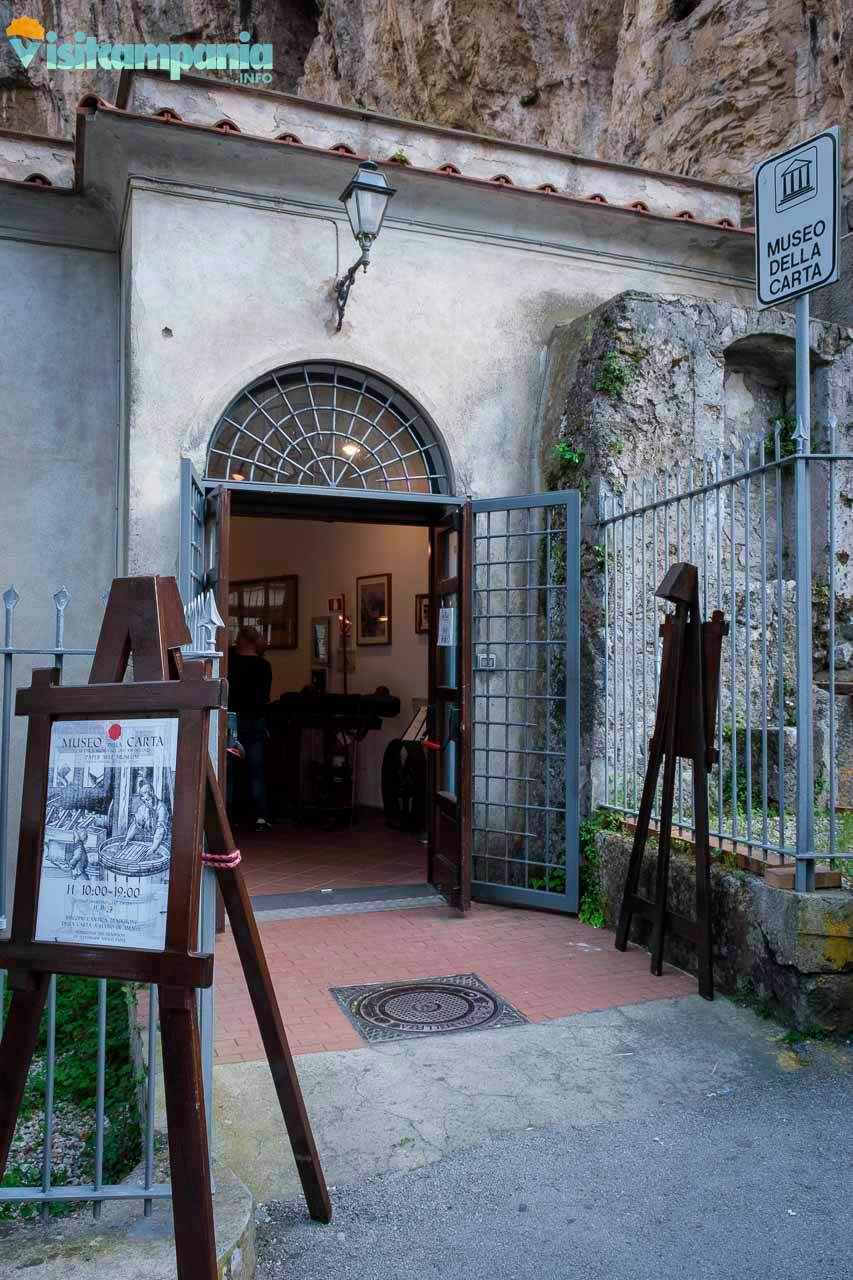
A few steps from the historic center, immersed in the Valley of the Mills, the Paper Museum exhibits the history of local craftsmanship .
The ancient 14th century paper mill, now restored and in operation, preserves the atmosphere of times gone by. This is where the “Amalfi paper” was born , famous throughout the Mediterranean since the 13th century. It was made with linen, hemp and cotton, according to techniques learned from the Arab world. In the museum you can see hydraulic piles, 18th century presses and vats for preparing cellulose pulp. During the visit, you can watch a sheet of paper being created using the traditional method . In some cases, you can even try your hand at it yourself . The tour is completed by historical photographs, period tools and a library dedicated to the history of paper.
Ideal for families , the curious and lovers of traditions.
Useful information
- Address : Via delle Cartiere, 23, 84011 Amalfi (SA)
- Opening hours : Open daily from 10:00 to 18:30.
Tickets
- Standard admission: €4.50
- Reduced: €2.50
- Private guided tours and packages with hands-on papermaking experiences are also available.
Contacts
- Phone : +39 089 8304561
- Email : info@museodellacarta.it
- Website
Shopping, crafts and nightlife
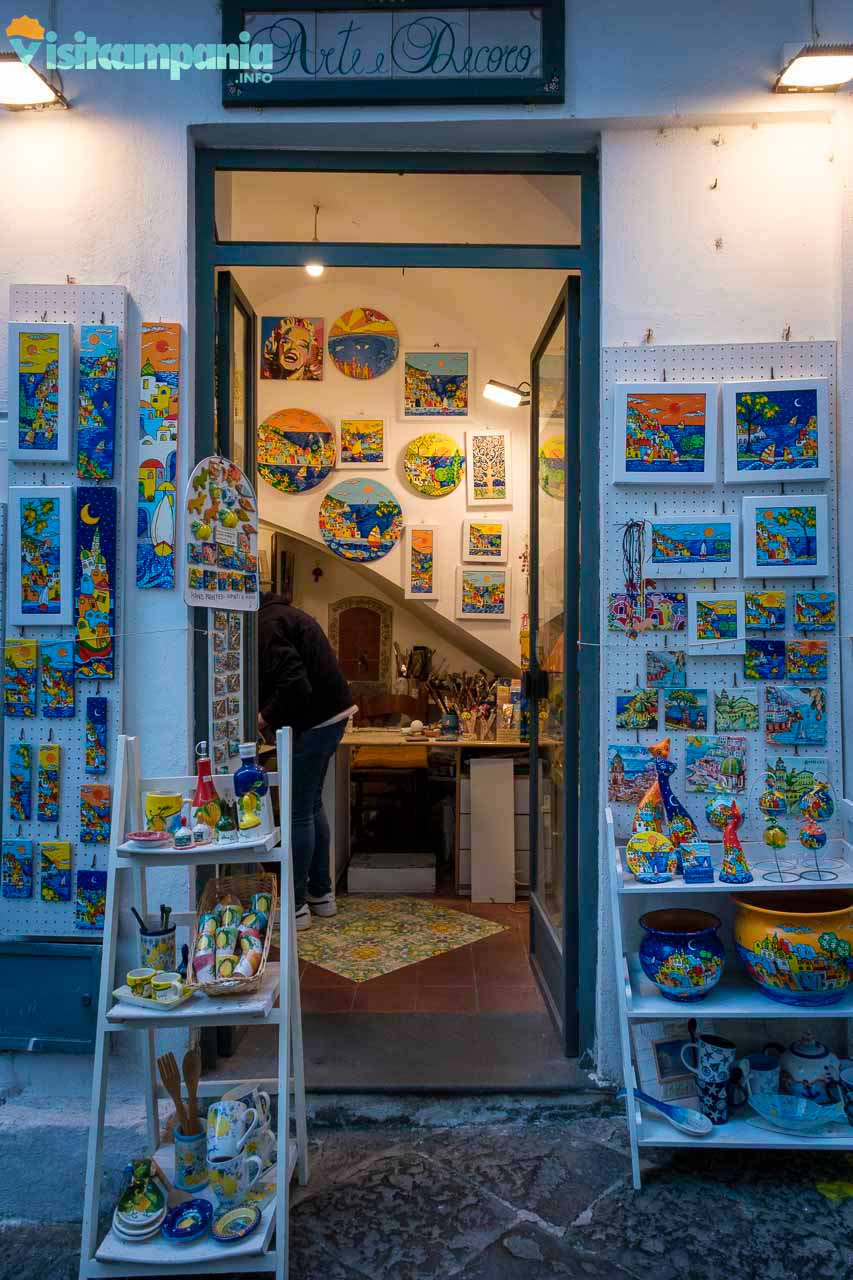
Walking through the alleys of Amalfi, it is impossible to resist the charm of the artisan workshops.
The hand-painted ceramics recall the sea and nature. In the historic center you can also smell the scent of the cotton paper , made with ancient medieval techniques. An art that makes Amalfi famous throughout the world. Fashion and accessories complete the picture: linen dresses, artisan sandals and handmade jewelry offer a fresh and refined style.
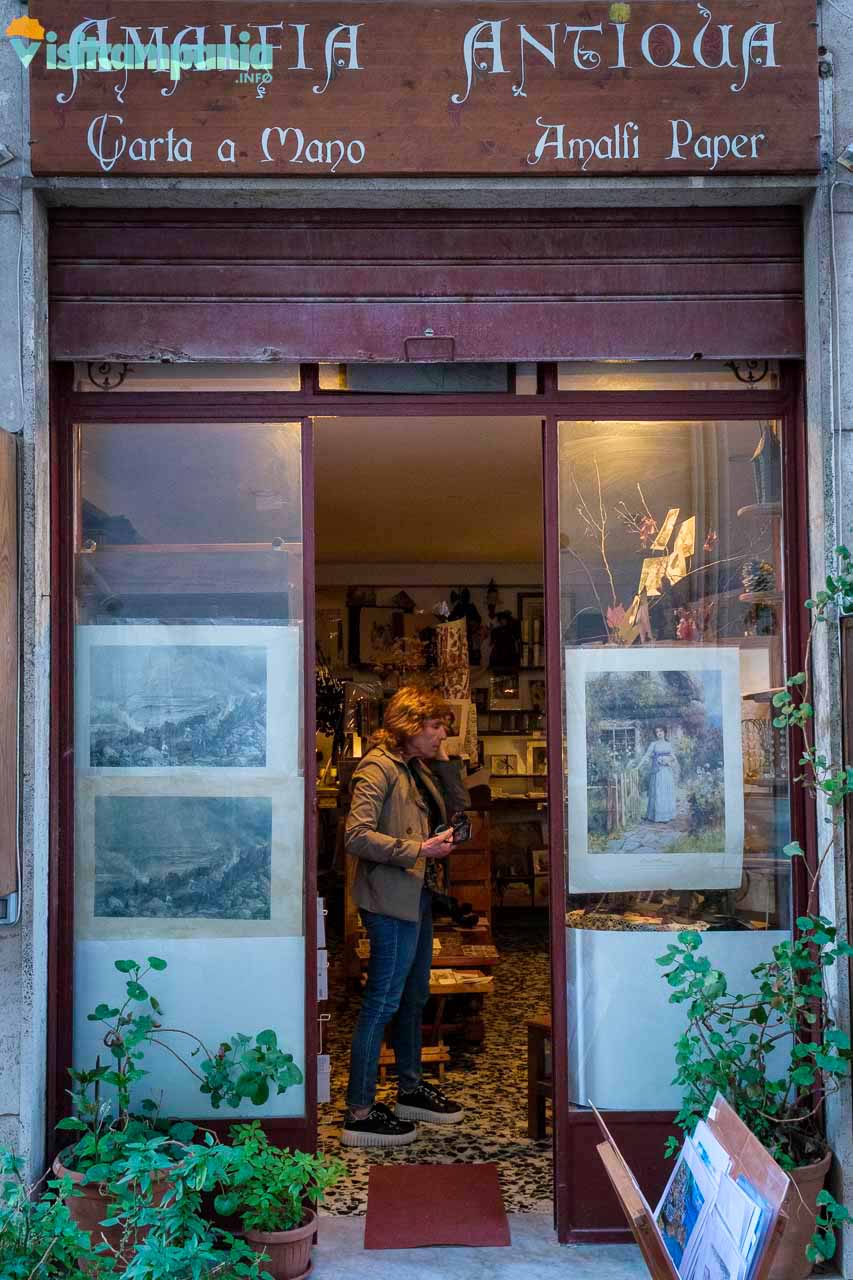
Then, when the sun sets, Amalfi comes alive with a lively and relaxing nightlife . The clubs on the seafront and in the little squares of the center offer opportunities for fun and socializing starting with the afternoon aperitif and continuing until late at night, often with live music, in a glamorous and elegant atmosphere.
Food and wine and typical local products
The Amalfi Sfusato lemon is the emblem of the territory. Used in cooking, perfumery and pastry making, it gives life to specialties such as limoncello, lemon delight and granitas served directly in the fruit.
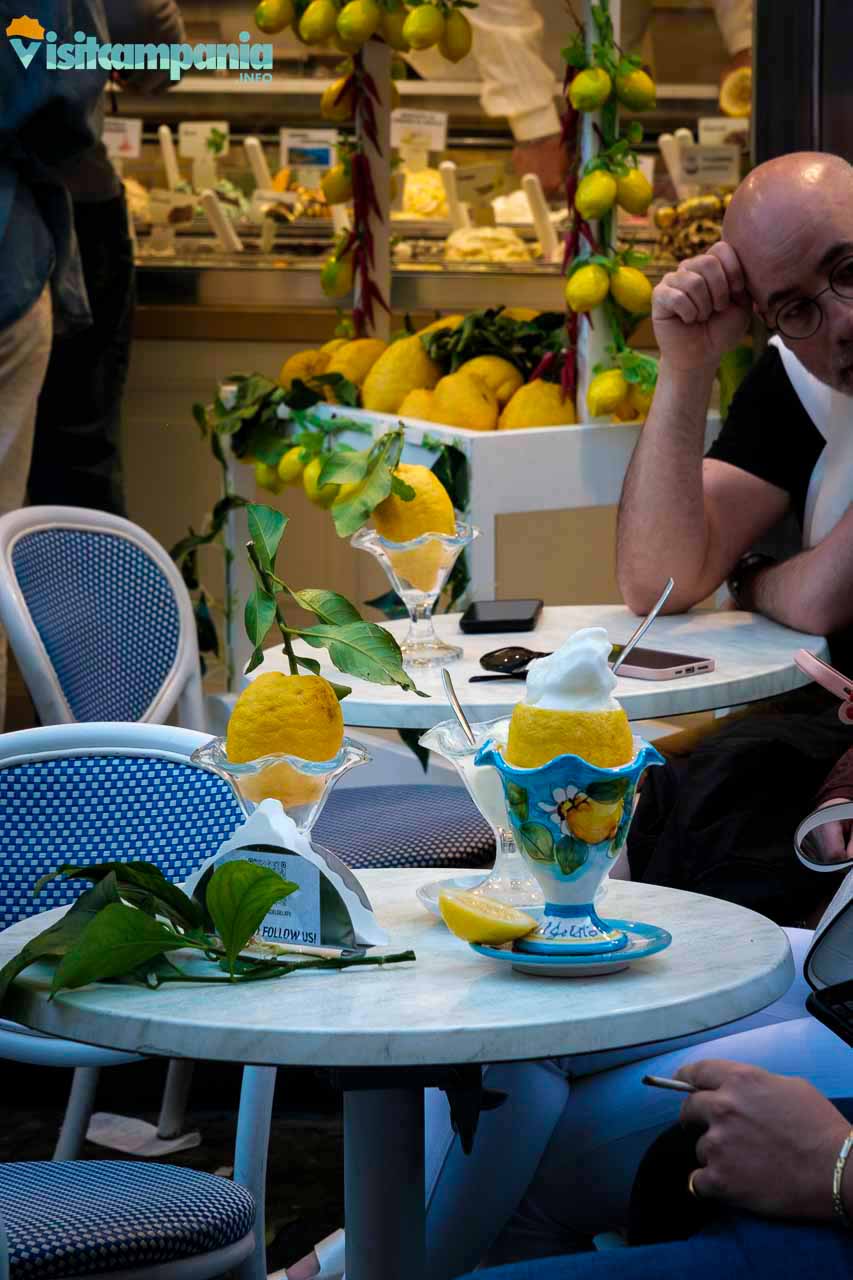
In local restaurants, don’t miss the seafood scialatielli , the fresh lemon pasta and the ancient ‘ndunderi of Minori .
Another excellence is the colatura di alici di Cetara , a condiment obtained by maturing anchovies in salt. Ideal on a plate of spaghetti, it contains all the flavor of the sea.
From the Lattari Mountains come fine cheeses such as the fiordilatte di Agerola , perfect for pizza, and the provolone del Monaco , mature and tasty, to be enjoyed with a glass of wine.
Finally, the local pastry shop surprises with refined desserts: in addition to the famous lemon delight , try the ricotta and pear cake , a symbol of Campania’s pastry innovation.
Complete the experience with a glass of Furore Bianco or other local wines, perhaps accompanied by preserves and typical products that can be purchased in the shops in the center.
Excursions and surroundings
Valley of the Ferriere
Surrounded by lush vegetation, Valle delle Ferriere is perfect for trekking . Along the way you will find waterfalls, streams, ancient mills and a rare prehistoric fern. The route, accessible from Pontone or Amalfi, lasts about three hours and passes through a unique natural oasis . To access the reserve you must purchase a ticket costing 5 euros per person. Exemptions are provided for children up to 12 years old, over 65 and disabled people.
Ziro Tower
Halfway between legend and spectacular views, the Torre dello Ziro dominates the coast . From Pontone you can get there in just over an hour along a panoramic path . It is said that Duchess Giovanna d’Aragona was imprisoned here. From the tower, the view takes in Atrani, Amalfi and the sea.
Boat trips
To admire the Coast from the sea, set sail from Amalfi towards sea caves and secret coves . Tours range from personalized private trips to group excursions, even at sunset. Some also include snorkeling stops. Among the most fascinating destinations I recommend the Emerald Grotto in Conca dei Marini and the Furore Fjord . Capri , with the Faraglioni and the famous Blue Grotto , is also easily reachable by boat from Amalfi.
Events and demonstrations
Regatta of the Ancient Maritime Republics
Every four years , in June, Amalfi hosts a historic rowing challenge against Genoa, Pisa and Venice . The galleons, rebuilt as in the 12th century, parade after an evocative procession in medieval costume.
The feasts of Saint Andrew
Patron saint of Amalfi , Sant’Andrea is celebrated on June 27 and November 30. The procession with the statue of the saint passes through the city and culminates with the spectacular ” Corsa del Duomo “, a race up the steps of the cathedral, a symbol of popular devotion.
Processions by sea
On June 13 and September 12 , the statues of Sant’Antonio and the Madonna di Porto Salvo parade on decorated boats amidst songs and blessings. Two events that mark the beginning and end of summer.
Good Friday
One of the most touching traditions: a nocturnal procession lit by torches , with heart-rending songs and the moving ceremony of kissing the feet of the dead Christ.
Summer between music and festivals
In July and August , the Amalfi Summer Festival transforms the village into an open-air theater: concerts, dance, opera performances. In autumn , the lemon festival and the monastery sweets festival celebrate local flavors.
Tips and curiosities
Amalfi, like the entire Amalfi Coast and the Sorrento Peninsula, is a renowned tourist destination of international fame. Consequently, it is a place characterized by elite tourism with high spending power , a fate that it shares, in particular, with nearby Sorrento and Positano. Everything or almost everything has very high prices that are not always justified by actual quality . Be careful in your purchases and plan carefully how to spend your budget.


